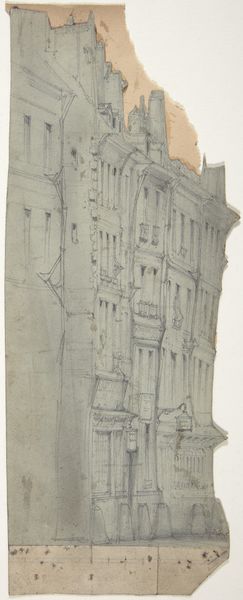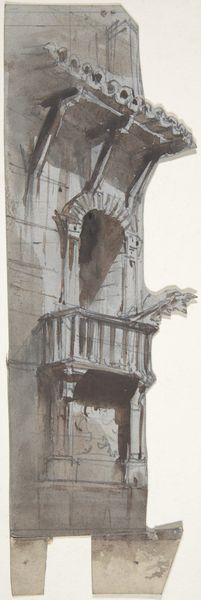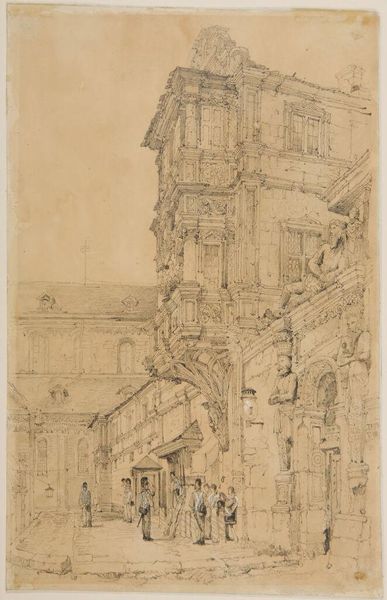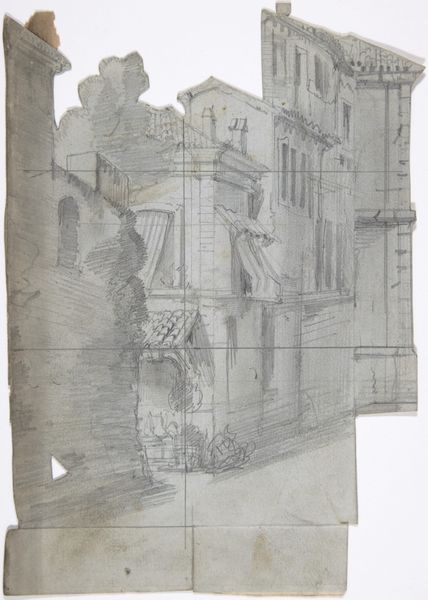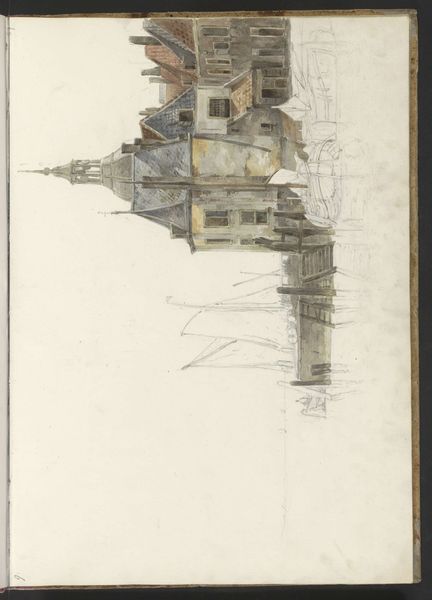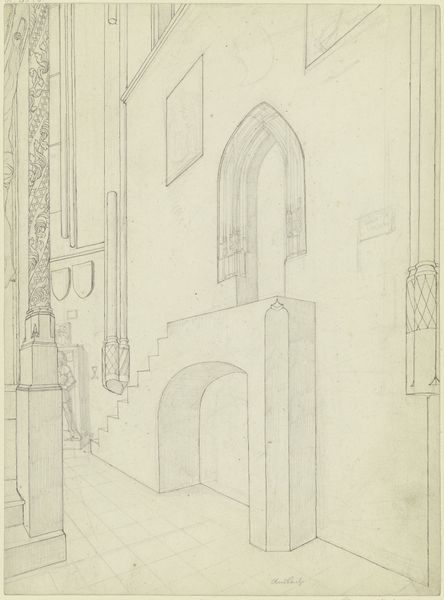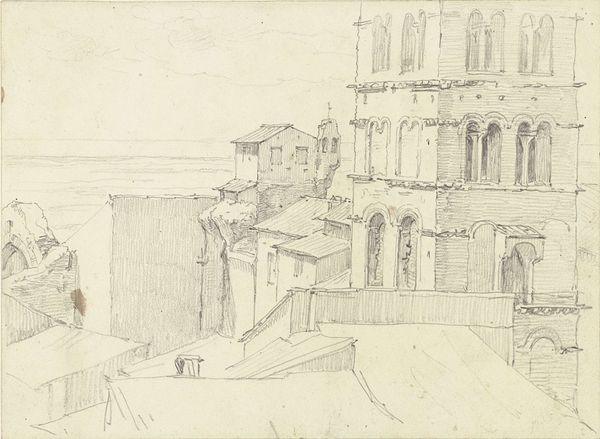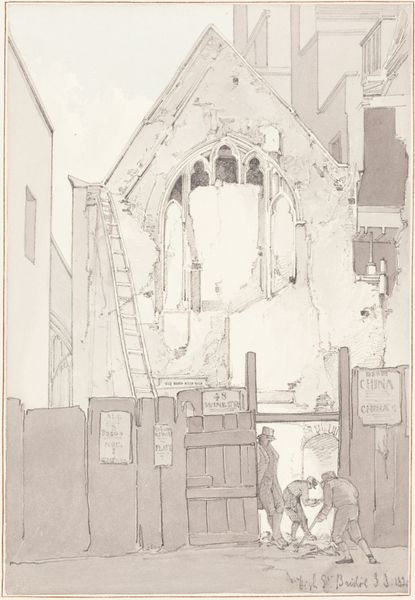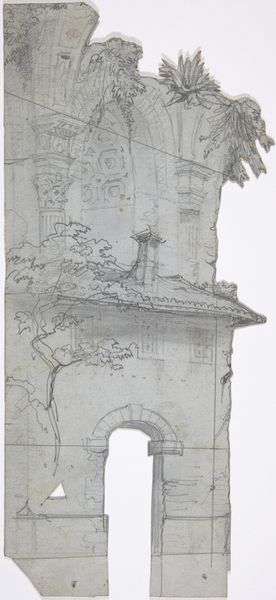
Design for a Stage Set at the Opéra, Paris 1830 - 1890
0:00
0:00
drawing, print, pencil, charcoal, architecture
#
drawing
#
neoclacissism
# print
#
charcoal drawing
#
pencil
#
cityscape
#
charcoal
#
academic-art
#
architecture
#
building
Dimensions: Irregular sheet: 12 1/16 x 6 9/16 in. (30.7 x 16.7 cm)
Copyright: Public Domain
Curator: This charcoal and pencil drawing, "Design for a Stage Set at the Opéra, Paris" by Eugène Cicéri, transports us to a world of theatrical grandeur. It resides here at the Metropolitan Museum of Art and was created sometime between 1830 and 1890. Editor: It has such a faded elegance. I almost smell old velvet and the lingering scent of stage makeup. The building almost looks like a ruin, yet there's such attention to detail. Melancholy grandeur. Curator: It certainly evokes a certain historical drama. If we examine Cicéri's position within the Romantic era and its fascination with neoclassicism, it is an ode to idealized forms juxtaposed with the dynamism inherent in theater and performance, especially when one considers the elitist social framework within which the Paris Opéra functioned at this time. Editor: That’s such a great lens! But just visually…I imagine the artist hunched over, painstakingly drawing those tiny window panes. Like building a miniature world, full of secrets and whispered plots. I wonder what play this was for. Was it a tragedy, a comedy? Curator: That's the delicious ambiguity we're left with. One could apply theories of space and power to examine how the Opéra functioned as a site of social performance, influencing not just the aesthetic landscape, but also shaping ideas about class, gender, and national identity during the Second Empire. Editor: I love the idea of national identity playing out on a stage like this. All those gilded surfaces reflecting carefully constructed fantasies back to a society yearning for spectacle! The grid marks give it this fascinating sense of something carefully structured from which creativity has taken flight, what you said about the elitist nature and social performances that went on there does hit home as well! Curator: Yes, even the artistic processes themselves often reflect societal structures. We must consider Cicéri’s influences. His stage designs aimed to evoke powerful responses within carefully maintained hierarchies. The grid you see mirrors the social and political architectures of that era. Editor: It leaves me wanting to grab my paints and design a rebellious counter-narrative, splashing colors onto this delicate drawing. To take that structured framework, challenge its assumptions, and celebrate those voices who never got a spotlight. Curator: A very powerful artistic instinct! Hopefully this piece allows us all to imagine those conversations across time and art historical contexts.
Comments
No comments
Be the first to comment and join the conversation on the ultimate creative platform.

